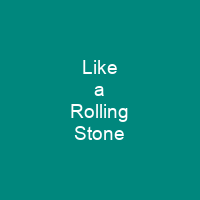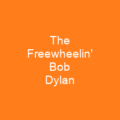‘Like a Rolling Stone’ is a 1965 song by the American singer-songwriter Bob Dylan. Its confrontational lyrics originated in an extended piece of verse Dylan wrote in June 1965, when he returned exhausted from a grueling tour of England. Dylan distilled this draft into four verses and a chorus. At an auction in 2014, Dylan’s handwritten lyrics to the song fetched USD 2million, a world record for a popular music manuscript.
About Like a Rolling Stone in brief

Revenge, that’s a better word’ The track has been described as revolutionary in its combination of different musical elements, the youthful, cynical sound of Dylan’s voice, and the directness of the question \”How does it feel?\” The song is considered one of the most influential compositions in postwar popular music. Rolling Stone magazine listed the song at No. 1 in their \”500 Greatest Songs of All Time\” list. It is the statistically most acclaimed song of all time, according to review aggregator Acclaimed Music, and has been listed in the top 10 by Rolling Stone, Time, Billboard, and The New York Times, among others. The track was recorded as part of the sessions for the forthcoming album Highway 61 Revisited. It reached No. 2 in the US Billboard charts and became a worldwide hit. It was released as a single a month later after a copy was leaked to a new popular music club and heard by influential DJs. Dylan has never publicly spoken of writing any other major composition in this way. In a 1966 Playboy interview, he described his dissatisfaction with the public’s expectations of him, as well as the direction his career was taking, and seriously considered quitting the music business. However, Dylan told two interviewers that he had never thought of it as a song, until one day he was at the piano it was singing, “in a slow motion pace, in the utmost of slow motion”
You want to know more about Like a Rolling Stone?
This page is based on the article Like a Rolling Stone published in Wikipedia (as of Dec. 05, 2020) and was automatically summarized using artificial intelligence.







